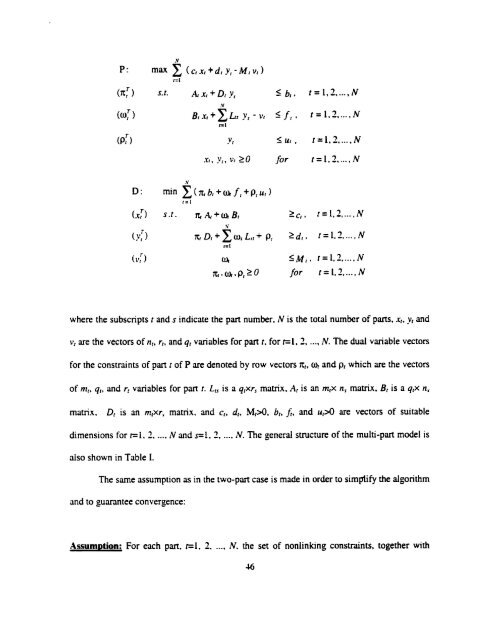X - UWSpace - University of Waterloo
X - UWSpace - University of Waterloo
X - UWSpace - University of Waterloo
You also want an ePaper? Increase the reach of your titles
YUMPU automatically turns print PDFs into web optimized ePapers that Google loves.
F I<br />
( L?: wi SM,. r=1.1 ..... N<br />
~~.o,*P,>O for t = 1.2. ... , N<br />
where the subscripts r and s indicate the part number, N is the total number <strong>of</strong> parts, x,, y, and<br />
v, are the vecton <strong>of</strong> nt, r,, and q, variables for part t. for t=l. 2, .... N. The dual variable vecton<br />
for the constraints <strong>of</strong> part r <strong>of</strong> P are denoted by row vecton n,, co, and p, which are the vectors<br />
<strong>of</strong> nt,. q,, and r, variables for pm t. L, is a qtxr, matrix, A, is an m,x n, matrix, Br is a qtx n,<br />
mütrix. DI is an m,xrs matrix, and cr, d,, MIS. b,, f,, and ut>O are vectors <strong>of</strong> suitable<br />
dimensions for r=l. 2. .... iV and s=l, 2, ..., N. The general structure <strong>of</strong> the multi-part mode! is<br />
dso shown in Table 1.<br />
The sme assumption as in the two-part case is made in order to simplify the algorithm<br />
and to gumntee convergence:<br />
Assum~tion: For each pan. r=l. 2. ..., N. the set <strong>of</strong> nonlinking constraints. together with<br />
46
















